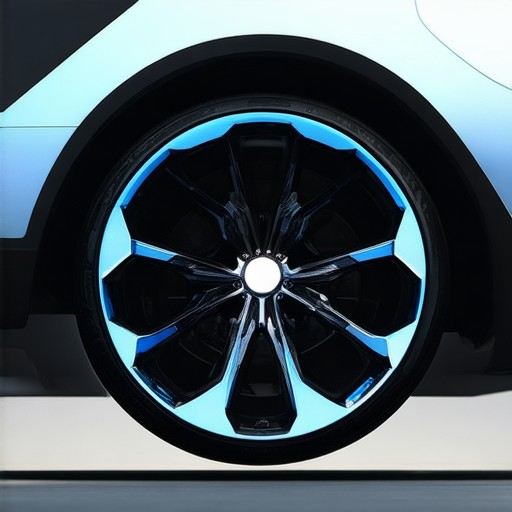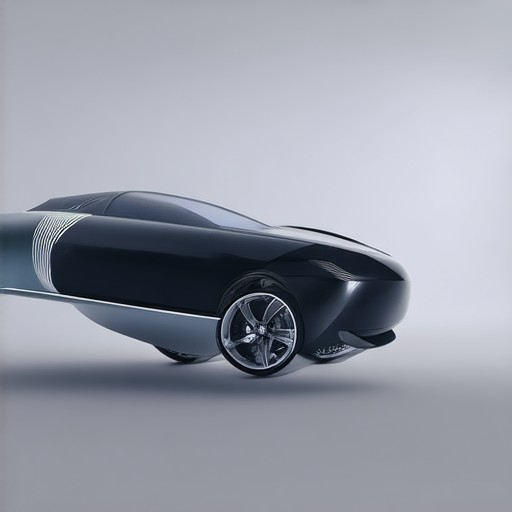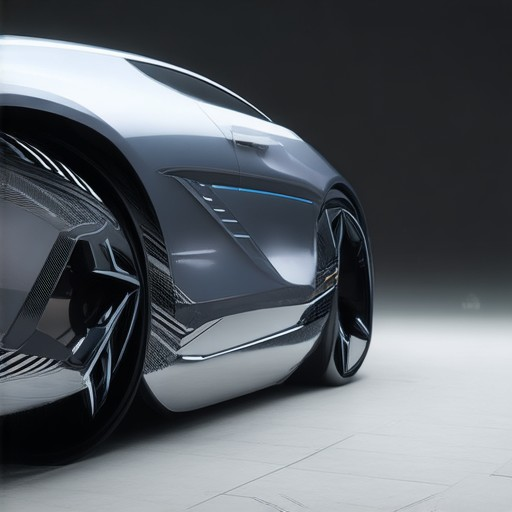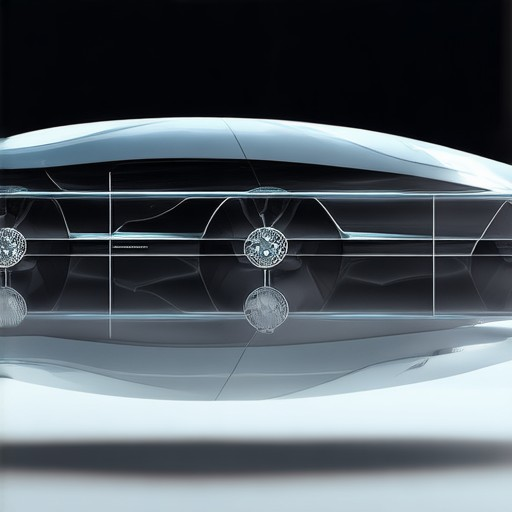Looking to elevate your vehicle’s performance and style? Wheel spacers offer a simple yet effective way to enhance your car’s appearance while potentially improving its handling capabilities. Whether you’re aiming for a sleek, custom look or seeking to optimize your ride quality, installing wheel spacers can be a game-changer. In this comprehensive guide, we’ll walk you through everything you need to know about wheel spacer installation, from understanding the basics to exploring the potential downsides and legal considerations. We’ll also delve into cost factors, usage tips, and how to tackle installations on specific vehicles like trucks and drum brakes. With the right approach, you can enjoy a smoother, more stylish ride without compromising safety or reliability. Let’s dive in and uncover the ins and outs of wheel spacer installation!

Are Wheel Spacers Easy to Install?
Yes, wheel spacers are generally easy to install, especially if you have basic mechanical knowledge and the right tools. Here’s a step-by-step guide to help you through the process:
- Check the Kit: Most wheel spacer kits come with all necessary hardware, including bolts and washers. Make sure everything is included before starting.
- Tools Needed: You’ll need a wrench or socket set, a set of jack stands, and a torque wrench.
- Remove the Wheels: Safely lift your vehicle and remove the wheels. Place the vehicle on jack stands to keep it stable.
- Prepare the Hub: Clean the wheel hub to ensure there’s no dirt or grease interfering with the installation.
- Install the Spacers: Slide the wheel spacers onto the wheel hub, aligning them properly. Tighten the bolts evenly to avoid warping the hub.
- Torque the Bolts: Use a torque wrench to tighten the bolts to the manufacturer’s specifications. Over-tightening can damage the wheel or hub.
- Test the Installation: Reinstall the wheels and test the vehicle to ensure everything operates smoothly. Check for wobbling or imbalance and tighten any loose components if necessary.
For a smoother installation, consider using a small amount of silicone lubricant on the bolts before tightening. This helps reduce friction and makes the process easier.
If you’re unsure about any part of the installation process, consult a professional mechanic or refer to the instructions provided by the manufacturer.
Looking for high-quality wheel spacers? Visit our wheel spacer collection to find the perfect fit for your vehicle.
Is There a Downside to Wheel Spacers?
Yes, there are several potential downsides to using wheel spacers, particularly when installed without proper consideration of vehicle dynamics and setup. Here are the key drawbacks:
- Increased Wear and Stress: Wheel spacers can distribute weight unevenly, leading to excessive stress on bearings, CV joints, and suspension components. This imbalance can cause premature wear and tear.
- Handling and Stability Issues: The extended wheelbase created by spacers can affect handling characteristics, making it harder to control the vehicle, especially during quick maneuvers or tight turns.
- Risk of Suspension Components Failing: Overloading the suspension from the added weight and leverage can strain components like shock absorbers, struts, and coil springs, potentially leading to damage or failure.
- Axle and Differential Issues: The increased distance between axles can cause misalignment or excessive wear on differential components, reducing performance and reliability.
- Cost of Replacement: Replacing damaged suspension parts or bearings caused by wheel spacers can be costly, often exceeding the initial investment in the spacers themselves.
- Legal and Safety Concerns: In some jurisdictions, wheel spacers may not meet safety standards, posing a risk of legal penalties or accidents if they fail prematurely.
For a safer and more reliable experience, we recommend consulting with a trusted mechanic or referring to our wheel spacer installation guide to ensure proper installation and maintenance. At Incubus Wheels, we prioritize your vehicle’s health and performance, offering high-quality products and expert advice to keep your ride safe and enjoyable.

Are Wheel Spacers Road Legal?
Wheel spacers are generally considered road legal when installed correctly, but their legality depends on several factors. Below is a detailed explanation to help you understand the situation:
- Definition of Wheel Spacers : Wheel spacers are devices that increase the width of your wheels, allowing them to fit better with your vehicle’s suspension and wheel arches. They are typically part of the wheel assembly and are designed to maintain proper alignment and handling.
- Legality in Most Countries : In many countries, including the UK, wheel spacers are legal as long as they meet certain standards. However, their legality may vary depending on local regulations and vehicle specifications.
- Installation Requirements : Proper installation is crucial for safety and legality. Incorrectly installed spacers can cause issues like poor handling, excessive wear, or even accidents. Always follow the manufacturer’s guidelines or consult a professional installer.
- Check Local Laws : Before installing wheel spacers, check your country’s road safety laws. Some regions may have specific restrictions or require certain certifications for wheel spacer usage.
- Vehicle Compatibility : Not all vehicles are compatible with wheel spacers. Ensuring your car or truck can handle the increased weight and stress is essential. Refer to your vehicle’s service manual for recommendations.
- Avoid Overuse : Excessive use of wheel spacers can strain your suspension and braking systems. Stick to manufacturer recommendations or test setups gradually.
For a smooth driving experience, always use high-quality wheel spacers and ensure proper installation. If you’re unsure, seek professional advice before making modifications.
Competitor Brands
If you’re considering specific brands, companies like KMC Wheels , Method Wheels , and Forgestar offer a variety of options for different vehicles. Each brand has its own strengths, so choose based on your needs and preferences.
By following these guidelines, you can enjoy the benefits of wheel spacers while maintaining compliance with road safety standards.

Cost of Installing Wheel Spacers
Installing wheel spacers can vary in cost depending on several factors:
- Labor Costs: Installation labor typically ranges from $50 to $150, depending on your location and the mechanic’s charges.
- Parts Cost: The price of the wheel spacers themselves usually falls between $20 and $100, depending on the material (aluminum or steel) and brand.
- Total Estimate: When combining both labor and materials, the total cost can range from $70 to $250 per wheel or set of wheels.
If you choose to install them yourself, you can save on labor costs but may need to purchase additional tools or parts, such as lug nuts or bolts, which could add to the expense.
For more information on selecting the right wheel spacers or learning how to install them, visit our wheel spacer installation guide .
Common Problems Caused by Wheel Spacers
Wheel spacers are popular tools for adjusting wheel positioning, but they can lead to several issues if not used properly. Here are some common problems associated with wheel spacers:
- Handling Issues: Incorrectly installed wheel spacers can throw off a vehicle’s suspension balance, leading to poor handling and stability, especially on uneven surfaces.
- Wear and Tear: Poor-quality spacers may rub against the wheel or hub, causing accelerated wear and tear on these components.
- Vibration: Misaligned spacers can create imbalance in the wheels, resulting in vibrations during driving, which may damage the wheels or other vehicle components.
- Loose Components: Inadequate fitting or securing of spacers can result in loose wheels, increasing the risk of accidents, particularly at higher speeds.
- Installation Difficulties: Complex or incorrect installation processes can lead to mechanical stress and prolonged time spent attempting to install or remove the spacers.
- Aesthetic Concerns: Oversized or improperly centered spacers can create an unappealing appearance, potentially affecting the vehicle’s resale value.
- Braking Performance: Interference with brake rotors or calipers can reduce braking efficiency, posing a safety risk.
- Compatibility Issues: Using spacers not designed for a specific vehicle model can lead to fitment problems and structural stress.

Can You Daily Drive with Wheel Spacers?
Yes, wheel spacers are designed to be used in daily driving conditions. They are a popular modification that enhances the appearance of your vehicle while maintaining functionality. However, it’s important to consider a few factors before deciding to install them.
- Weight Distribution: Wheel spacers distribute weight evenly across the vehicle’s axle, which can improve stability and handling during daily drives.
- Braking Performance: Proper installation ensures that braking distances remain within normal limits, though slightly longer stops may occur due to the increased wheel size.
- Handling Characteristics: Larger wheels can affect ride comfort and handling, particularly on uneven roads. Proper suspension setup can mitigate these effects.
- Tire Wear: Aggressive driving habits or poor road conditions may accelerate tire wear, so it’s essential to monitor tread depth regularly.
While wheel spacers are generally safe for daily use, they are often paired with wider tires to optimize performance. Unlike traditional lowering kits, spacers preserve the factory ride height, offering a balance between aesthetics and functionality. Just ensure they are installed correctly to avoid issues like wheel wobble or alignment problems.
For the best experience, consider consulting with a professional installer to verify that your vehicle’s suspension and braking systems can handle the added weight and dimensions. At Incubus Wheels, we recommend high-quality spacers that are compatible with your vehicle’s specifications to ensure reliability and safety on the road.
Explore our selection of premium wheel spacers to find the perfect fit for your vehicle.




0 Comments